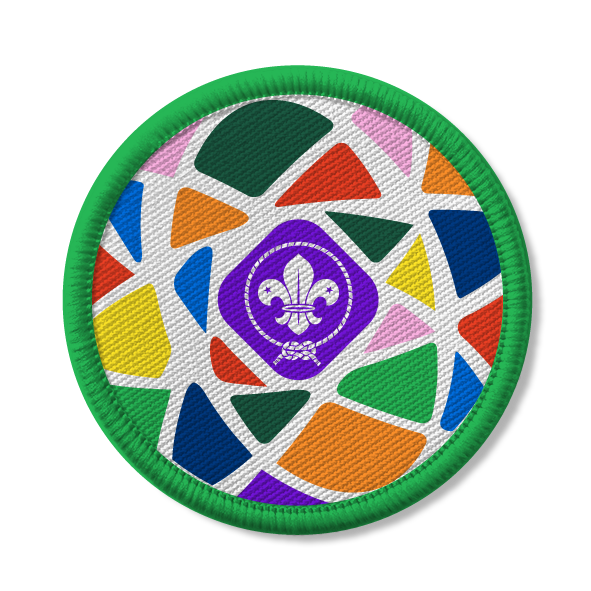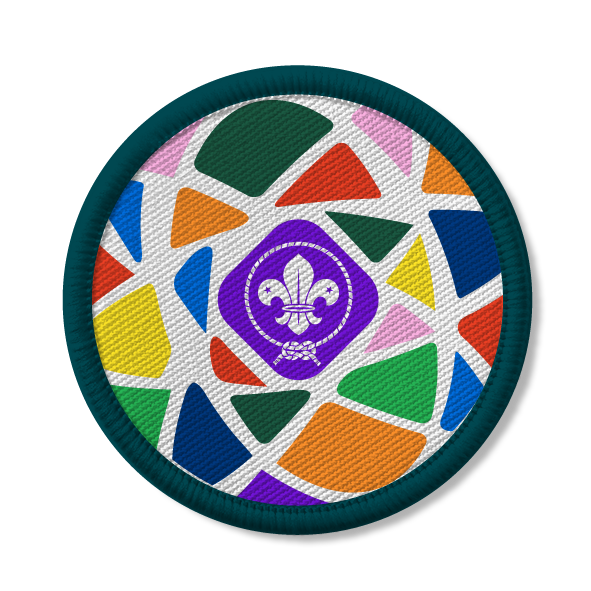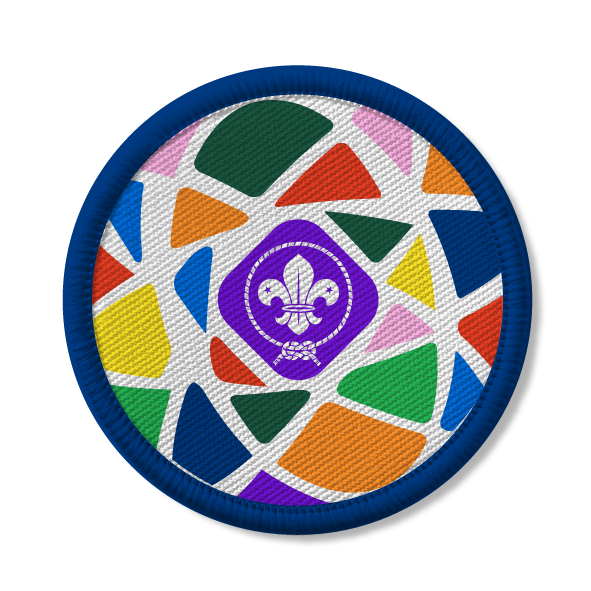Try filtering water using natural materials
You’ll need
- Paper cups
- Access to water
- Natural materials (for example, leaves, moss, twigs, feathers)
- Container to hold water such as a bucket
Before you begin
- Use the safety checklist to help you plan and risk assess your activity. Additional help to carry out your risk assessment, including examples can be found here. Don’t forget to make sure all young people and adults involved in the activity know how to take part safely.
- Make sure you’ll have enough adult helpers. You may need some parents and carers to help if you’re short on helpers.
Planning this activity
- Choose an appropriate outdoor area such as outside your meeting place, a nature reserve, woodland area, riverside, canal, or park. If you’re going to meet at a location other than at your usual meeting place, make sure parents and carers know exactly where you’ll be, what people may need to bring, the day, the location, and what time to drop off and collect everyone.
- Make sure everyone knows to come dressed for the weather. Don’t forget to check the forecast and be prepared for it to change.
- It’s important to check the sunset times, making sure that you’ll have sufficient light throughout the activity. It’s best to run this activity on lighter evenings, such as in summer.
- Remember to have suitable supervision, an InTouch process in place and activity consent forms. It’s important to make sure that anyone with medication, including an inhaler, brings it with them and gives it to a volunteer, too.
- Make sure the area you visit is accessible for everyone, choosing a suitable place for drop off and collection. You may need to think about avoiding steps or steep gradients or including frequent breaks.
- Alternatively, if you don’t have access to a space to explore and forage during the meeting, you could collect materials to use before the session. You could also ask people to bring their own or use artificial materials you may have in a survival situation, such as clothing.
- Remind everyone it’s still not safe to drink the filtered water.
Introducing the space
- Everyone should head out to the outdoor space or meet at the chosen venue.
- Explain the boundaries of the playing area and where the no-go zones are.
- Tell people how they can use the space respectfully, without disturbing the wildlife or other people enjoying the site if you're in a public space. Remind people to be calm and quiet, so you don’t disturb wildlife, and not picking any flowers or plants. They should handle wildlife gently, take litter home and put things back where they were found to make sure wildlife isn’t harmed or damaged.
- Tell everyone where adults will be around the site and what people should do if anyone in their team needs help. This should include setting memorable spot where an adult will stay at all times.
- Explain the signal to stop and how long the activity will go on for. A long blast on a whistle works well as a signal to stop the activity.
- If playing in a public space, young people should be paired up so no young person is left alone and they should run or move together.
Learn about water
- Explain that water can contain germs (such as bacteria and viruses) and chemicals which can be harmful and make you unwell. Both tap and bottled water may not be safe if it has not been produced under proper conditions, even if it is clear and colourless.
- Tell everyone that water should only be used for drinking and preparing food if is known to be safe. This also applies to water used for making ice cubes and cleaning teeth.
- You should only use water for drinking, making ice cubes or cleaning teeth if it has been:
- bottled or canned by a known manufacturer and the seal is intact
- boiled and cooled and stored in a clean container
- chemically disinfected or passed through a reliable water filter and stored in a clean container
Find your filters
- Explain you’re going to make a water filter out of natural materials. The water filtration removes dirt by physically blocking it, while letting the water pass through the filter. Unfortunately, this filtration will not remove all the germs, dirt, bacteria and viruses that can make you unwell.
- Everyone should spend up to 10 minutes searching for items to use in their water filter. They should experiment or be creative. They can choose anything they think will help filter out dirt from the water, but they shouldn’t take anything from living plants.
- While they’re searching, an adult or young leader should fill a container, such as a bucket, with water. They should add a small amount of dirt and debris to the water to create some dirty water and set it aside.
- Once everyone’s finished collecting their materials, they should take two paper cups and a pen, pencil, or stick.
- Everyone should poke a hole in the bottom of one of their cups using a pen, pencil, or stick.
- The other cup should be put to one side, as this is where the filtered water will be poured into. This cup could be slightly bigger to help catch the water.
- Everyone should layer the natural materials they collected, such as small stones, moss, and leaves, in the cup with the hole in to create a filter. They should experiment with different amounts of each material and the material’s positions within the cup.
- Meanwhile, an adult or young leader should transfer the dirty water they made into enough cups for everyone to have one each.
- Everyone should take the cup of dirty water.
- Hold the water filter cup above the clean cup, and slowly pour the dirty water into the filter cup. A good filter should remove all the visible dirt and debris, but no-one should drink the filtered water.
- Everyone should pour the water through their filter few times to see if they can remove even more dirt. They should try to perfect their filter each time, until it works as well as possible. It’s still not safe to drink the filtered water.
- As people are filtering their water, remind them that it’s not just the dirt that you can see in the water that might be bad for you. Bugs, bacteria and viruses can be invisible in water and make people very unwell.
- Explain that to make the water safer to drink, you’d need to heat the water to a rolling boil and then boil it for at least five minutes. After water has been boiled, it should be removed from the heat and allowed to cool naturally, without adding ice. However, boiling won't improve the taste, smell or appearance of the water.
Bringing water to a rolling boil for one minute is the simplest way to kill most types of germs, even if the water is cloudy and at high altitudes. If water is cloudy, allow it to settle and filter through a clean cloth or coffee filter before boiling. You’ll need to boil water for around three minutes if you’re at an altitude over 2000 m (6500 feet).
Reflection
This activity was all about valuing the outdoors and trying new things. Do people usually filter their water before they drink it?
Some people may have a water filter at home to make their water taste nicer, but in the UK people usually have water that’s safe to drink in their homes.
Did people’s filters work better than they expected? What outdoor materials were the most effective?
This was a fun experiment, but nearly one billion people around the world don’t have access to clean water. How do people think it affects their lives?
People could think about using dirty water for drinking, cleaning, and washing their hands. How could people help?
They could check out Scouts for Sustainable Development Goals for inspiration and ideas.
Safety
All activities must be safely managed. You must complete a thorough risk assessment and take appropriate steps to reduce risk. Use the safety checklist to help you plan and risk assess your activity. Always get approval for the activity, and have suitable supervision and an InTouch process.
- Outdoor activities
You must have permission to use the location. Always check the weather forecast, and inform parents and carers of any change in venue.
- It’s up to you how dirty the starting water is. You could get creative with what you add.
- Remember, if you don’t have access to an area to collect natural materials, you could collect materials to use before the session, ask people to bring their own, or use artificial materials you may have in a survival situation such as clothing.
- You don’t have to use paper cups, but they’re better for the environment than plastic ones. You could also use plastic bowls or buckets if you have a use for them afterwards.
Make it accessible
All Scout activities should be inclusive and accessible.




